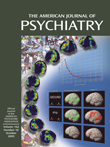Gambling is the fastest growing leisure activity in our society. In the first chapter of this book, evidence is cited that gross gambling revenues of $47.6 billion exceeded by $7 billion those of the combined revenues from film box office, recorded music, cruise ships, spectator sports, and live entertainment. This volume on pathological gambling, edited by Grant and Potenza, provides an up-to-date, encompassing review of public health, clinical, etiological, preventive, and treatment aspects of problem and pathological gambling.
My perspective is that of a person who is hopelessly a clinician. That this book could stir my complacency (I think we are all more or less complacent about our respective perspectives) speaks for the merit of this multidimensional review. For example, the chapter on public health by Shaffer and Kidman makes the cogent point that public policy makers would do better to consider interventions and legislate policies to affect problem gambling rather than pathological gambling. Although the latter is obviously more serious and receives more clinical attention, the former is much more pervasive and has a more severe impact on costs to public health and overall costs to society.
The chapter on epidemiology underscores the extraordinary, rapid growth of Internet gambling, the need for incidence and longitudinal studies to track the course of disordered gambling, and the need to address nosological/methodological issues to further understand problem and pathological gambling. The chapters on clinical characteristics of pathological gambling, including its course, progression, and phenomenology, are succinct and highlight the human dimensions and painful, tragic consequences of gambling when it becomes problematic and compulsive.
That gambling disorders are embedded (both as cause and consequence) in human distress should not be surprising. Chapter 3 aptly brings this point home, citing evidence of extensive comorbidity of other psychiatric disorders. In one study, 76% of an inpatient sample were diagnosed as suffering from major depression. Similarly, co-occurring bipolar, anxiety, attention deficit hyperactivity, and substance use disorders are found to be disproportionately high among pathological gamblers, as are personality disorders and attempted/successful suicide. An interesting chapter on categorization reviews shared features with obsessive-compulsive disorder, substance use disorders, and mood disorders. The chapter on adolescents and young adults documents an apparently higher rate of gambling among youth than adults and explores why this might be so. Although the risk for problem and pathological gambling decreases among the elderly, the chapter on older adults reviews how targeting the elderly with industry incentives to gamble can leave susceptible individuals to suffer with the consequences of excessive gambling, especially when it is combined with loss of traditional adult roles, physical disability, boredom, cognitive decline, and depression.
The section on etiology includes chapters on behavioral/conditioning and biological models for understanding problem and pathological gambling. It is unfortunate that the “addictive personality” is considered, a pejorative designation for which there is little clinical or empirical evidence. The authors are better when they touch on affective states that govern addictive or impulsive behaviors, including gambling. For example, in the chapter where gender differences are considered, it appears that women self-medicate states of distress and the impulsive/compulsive behaviors of men seem related to sensation seeking. The interested reader will appreciate the chapters on behavioral and biological underpinnings, including the role of neurotransmitter systems, for their help in understanding these factors in the normal and pathological dimensions of gambling activities.
The last section, on prevention and treatment, provides thoughtful commentary and recommendations on the role of the clinician in considering prevention efforts, treating adolescent problem gambling, cognitive behavior therapy, and psychopharmacological treatments. There is final helpful appendix of screening and assessment instruments to evaluate gambling disorders.
I found that the experience of problem and pathological gambling, including its stages, progression, and consequences, came most alive in this book with the case examples sprinkled throughout. Although reams of empirical data delineating many dimensions of gambling are considered, I think that the authors of the chapters, many of whom are clinicians, fall short in exploring the cases they present. They miss an opportunity to tease out the experience of affected individuals to explain the vexing questions of how and why gambling can become so compelling and consuming. For example, in chapter 7 the reader is left dangling with no comment on the case of a 48-year-old woman whose impulse to gamble was triggered by bad moods and anxiety.
The main strength of this book is in the enormous amount of data compiled to elucidate public health, clinical, etiologic, prevention, and treatment aspects of problem and compulsive gambling. There is much to learn here, but, as mentioned, the reader would have benefited from more case histories and elaboration of the clinical features of excessive gambling.

